

"This may seem to move far from the Toronto School as one of the earliest steps towards media ecology. Yet the combination of the poetic and the satiric had been specifically directed in the case of James Joyce, McLuhan’s prime literary influence, at the individual’s encounter with the environment of the contemporary city in Ulysses and with the transformation of the world resulting from the new technologies and the modes of living that they had created in Finnegans Wake. Such works apart from their artistic merit were profound examples of cultural ecology. (In this Joyce would be followed by many later writers such as Pynchon, Burroughs and Vonnegut as by many ecologically conscious SF writers such as Brunner, Lem, Leguin and Gibson). What McLuhan and to an extent Carpenter did was to turn the devices used in satiric fiction into meditations on the actual life and conditions of their contemporary world. Like the Menippean satirists he admired ,McLuhan felt that all “moralization” should be implicit and should arise from the way the sensitization to percepts and affects intensified the individual’s awareness of the contemporary maelstrom of a society nearly totally dominated by technologies managed by a few. So the style of McLuhan and of Carpenter was one that intensified perceptions and contextualized them in an affective ambience of comic critique."
Read :
THE TORONTO SCHOOL OF COMMUNICATIONS by Donald F Theall














![et cetera : LOVE [1977]](https://blogger.googleusercontent.com/img/b/R29vZ2xl/AVvXsEgQ8s7vwLQuzHDNgqlfBacxRkEbOErToak9kmgFl0VmyIYEqS9qIzNIVcXKpzTncPhqo3TSgOyztAguIW6OlXw65aFHmpx6cRzmvCUQQMTwUGUOd0iE0GbJakEc3g3kBAJrvlZP4z3eesg/s1600/etc1977.jpg)









![MAC LUHAN [sic] : LOST IN TRANSLATION](https://blogger.googleusercontent.com/img/b/R29vZ2xl/AVvXsEg92tMqBMDA917NDivsS2ZwIirx9KTf24tOCgFFnK65p7Hw5dvqEh1e2aefCynj2UW8u-k8zwBXbjgypsCXUcv-5G7ZCsyDB13giHEjmhVISAeW-oI_JV6ePOXW_XBDPwy2nREAoqRU7Z8/s1600/MAC.jpg)






















![Les Yeux De Nadja [unpublished]](https://blogger.googleusercontent.com/img/b/R29vZ2xl/AVvXsEgrXohpIuxxYyjKoqBSQf3TpYGjnttZnjRFvmMdshadfnVKi7PMAjIqEuqYctZFXOFH2n-oH75oJx-YkaON7xvaZgVdvaK0zfSOurEmCKqmWF6qXh2F3VbqyixfGhvY4qH6LENMTs1wCIw/s1600/2xsurreal.jpg)
















![PIED PIPERS [MARSH] ALL](https://blogger.googleusercontent.com/img/b/R29vZ2xl/AVvXsEhqvGIGG9lWZYhFZRVc_V8EJG2apQBsys4kNQOQsA0EV6H6Tg-SMN0sX15NXy_GzsF3xAUdcb2QlfvJk-RU-Rha-3Eu5Mnglkf5KLe6pccVqAP4VR_Gi4fGQ716QSmDe3Zna5Uwct5d2sw/s1600/piedPiperMarshALL270.png)






























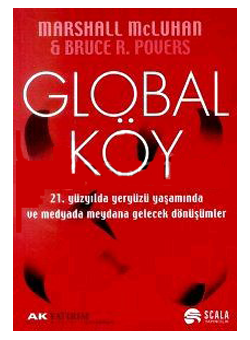




























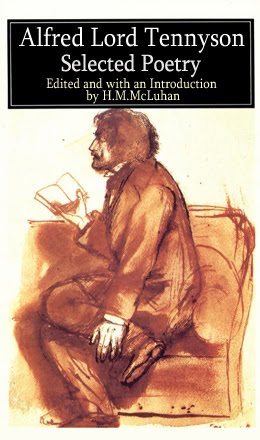

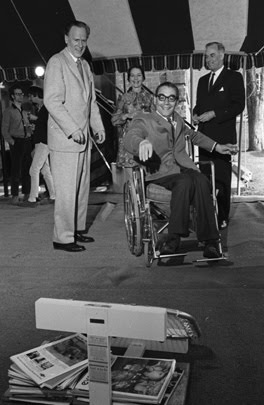




![PICNIC IN SPACE : The Great Minds of Our Time Film Series [1973]](https://blogger.googleusercontent.com/img/b/R29vZ2xl/AVvXsEjyov75DRIUBWcYLkzPYmupFy8CQ9dQ4Q798zDIN6jPNsSdBB_WuOcvPl4WjMAz10csG071oCO3BCUtIcKyHoIkCN0lCy0OxGCV_HrLXrGNKRpUiKMrqzkJh4LSc7jT_KrrqmClapSlVa8/s1600-r/PicnicInSpace.jpg)


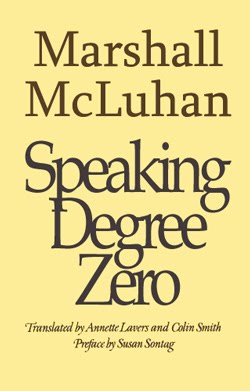






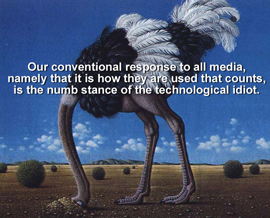


















![more Hidden ground [re:Bride] : the "flippancy" of tone seemed just "right"](https://blogger.googleusercontent.com/img/b/R29vZ2xl/AVvXsEg-hQyF9KGGhKYc73nUGmV1bStJ4fTJVh0-TL1ZtikLZEv5ppjhB3DOhFcVuzGq-kByrwtTAWgCcE173pA3UTIPe7h6xJjsPt7lRvNym007ZsdXenMDLNimKcwtaTOqkGleoxmXOeCKtxXL/s1600-r/LEAVISLEWIS.png)
















![BABA WAWA [TODAY SHOW, Toronto City Hall 1970]](https://blogger.googleusercontent.com/img/b/R29vZ2xl/AVvXsEjTZAIFkA07K36WGk951vmZnLPU99fOdNzlvVhyphenhyphenhKZEKu2n2AW5EA1CDZGaTk0aYRXUv7IOXG39igaikoE6SWm8j7QIG96wYRE54oBXwvlaNCJzp15vdkrcqR97IMMny-8sHjM-VDotTOaY/s1600-r/babaWawa.jpg)

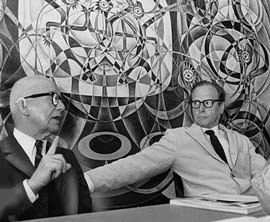

![enter the dragon : "typhon in america" [unpublished]](https://blogger.googleusercontent.com/img/b/R29vZ2xl/AVvXsEjdCnZdJ6JbaLc6hyUmUJo5UJ0m8WZSj_afYU9oRlHKIUgAIfcy2EPHNAptSRYEAmpOf0Xaa0B8iMgOTF302lY0Xmbyne0hvrdRyNo-t0Q-PPdzqX39uI3T5x5FppRPaQf9sSaXytrOpWVN/s1600-r/TIA.jpg)




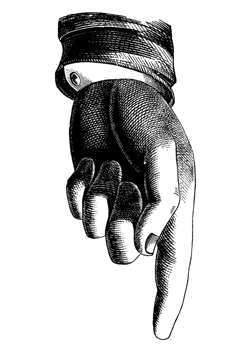
































![Take Today [1972] : "the consumer becomes a producer..."](https://blogger.googleusercontent.com/img/b/R29vZ2xl/AVvXsEhA53bdVdTaXdQo1fDmrsI8oiAwF-3jampcanOq8uk3QMh8_ImkNsTiKd4-RnZY8Vbwqh1fymJiyCl1CSLcSonXHQM6XbnJYQi_Vu89gbAV4jVq73EtlbM3w6CthyphenhyphenV_pHEjE6eu_VhC489u/s1600-r/PROSUMER.jpg)








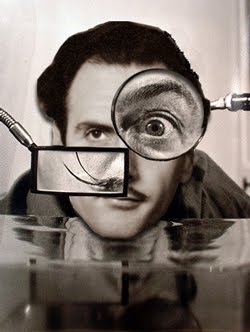















































































![" Outtragedy of poetscalds!, Acomedy of letters " [ FW 425.24]](https://blogger.googleusercontent.com/img/b/R29vZ2xl/AVvXsEhJMrJLN3oPUb25A2tjQtWZcZxA4wZB0IOvaIAvxosAUqlFc258HHvzvlnHHvKhKq7hG3epo76izY2Bu0HC3Cy-8S46Rf0Wni3L8j8jEfpT7sXK3UFlXBMtN2v2JdrmdxvWk8VWKjkhN4-9/s1600-r/preplexLP.png)











![mars[HAL]9000 : " Tomorrow is our permanent address."](https://blogger.googleusercontent.com/img/b/R29vZ2xl/AVvXsEhmblupqmUiuV3GbyayJiDRGEO63TEgwjHi-i8b0kVYDvXrKFWTCyl-e21la4QJXC4nDFDzx51Omi6fYPLJcqRHFoP6zSsL0CVZF98eMf6mxCE2WDfvMmT4q9G3X45-P0IYGDmliE0fCR3C/s1600-r/marsHAL9000_250.jpg)












































































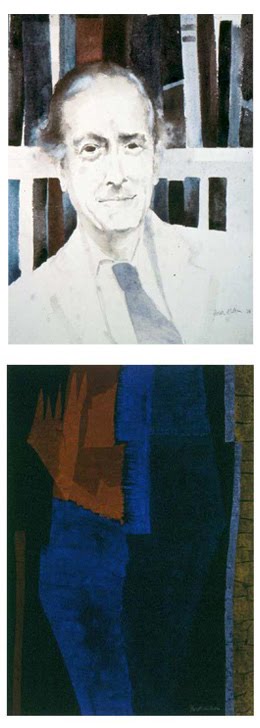















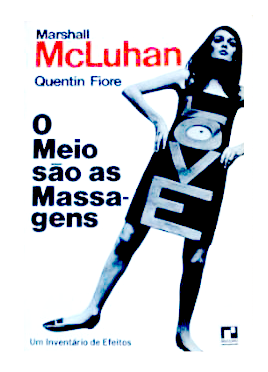





































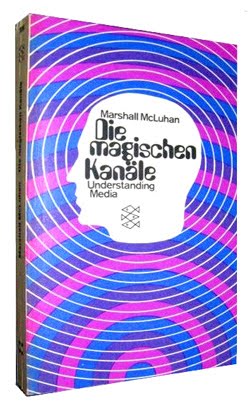
























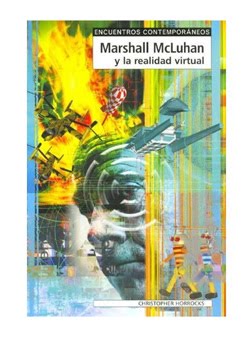




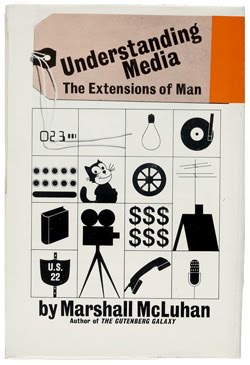





























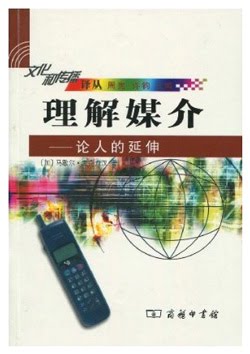




















![Lucifer [from Latin] <br>meaning "light-bearer"](https://blogger.googleusercontent.com/img/b/R29vZ2xl/AVvXsEhq-2kZZOfh-Syv1Ewa0Ns2O6ZeP59pcsJp9ihhKcXCaovYZO_cKxffC5iSKOXFHr6E1jiHc6zedt1U6I95831RgpVdm3qk8-9C3y1yPyrCiQe4jgx-DsbeHnjKnw9t6Qx3ZM5TSYxiPj5H/s1600-r/lucifer.png)


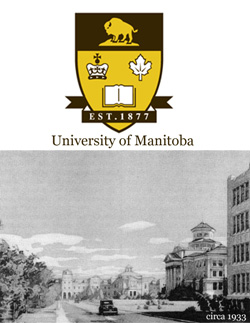










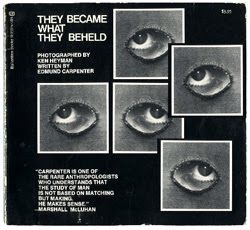






































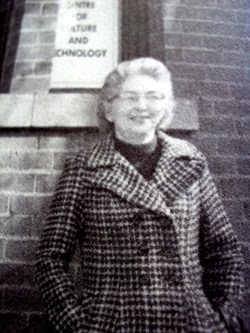
















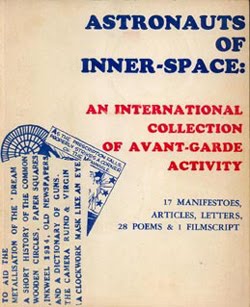












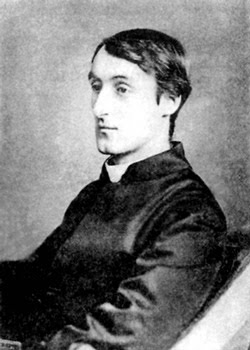


















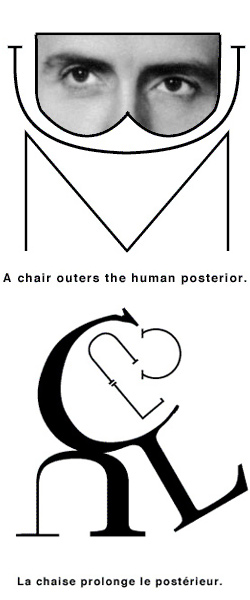






















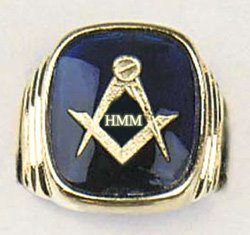















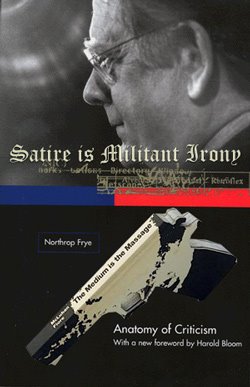
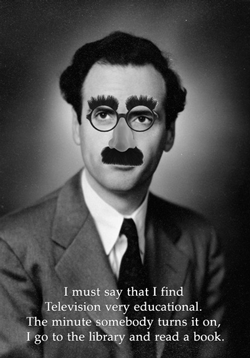






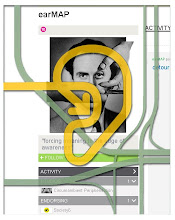















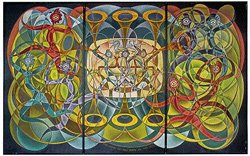










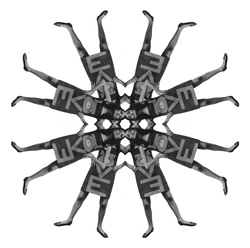



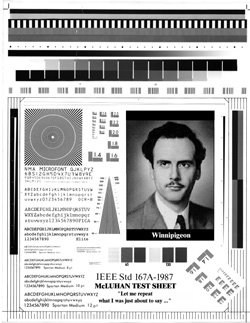

4 comments:
THE TORONTO SCHOOL OF COMMUNICATIONS
Donald F Theall
In 1950 Toronto was a relatively small city of around a million residents with a predominantly British ambience, and the University of Toronto had less than fifteen thousand students, including graduate and professional schools._ Yet it was shortly to become the focal point for major contributions to the study of communication, culture and media. Before the late 1930s Toronto had two professors, Eric Havelock and Harold Adams Innis, who would later become associated as two of the forerunners of a “school of thought” initiated by a group of individuals from widely different disciplines were all interested in the practice and problems of communication and culture._ This is the sense in which it is used with relation to such groups as the Cambridge School of English and the Chicago School of Communication, the latter usually considered as including John Dewey and George Herbert Mead among others such as Robert Parks and Cooley – and the former by such individuals as F.R Leavis and his wife, Queenie, and I.A. Richards among others. That school would be brought to fruition by Marshall McLuhan, a professor of literature and a literary historian, and Edmund “Ted” Carpenter, a young anthropologist and archeologist. Initially it would come to embrace individuals from such diverse areas as psychology, political economy, and town planning, and later electrical engineering and industrial engineering.
This created a unique multidisciplinary synthesis for the early 1950s, which first explored the future implications of Innis’s political economic history of communication from Egypt and the Ancient Near East to the contemporary U.S. in which he first posited the importance of the loss of a bias for time in the rise of the technological mind and Havelock’s classical scholarship exploring the shift from orality to literacy in classical Greece. To these earlier insights the group who launched the Toronto School brought together: McLuhan’s knowledge as a scholar of Elizabethan drama, contemporary English and the history of the major mode of education, the trivium (grammar, logic and rhetoric) from Grecian times until the Renaissance; Carpenter’s archeological fascination with “primitive” art and “patterns that connect”, his experience with Inuit and New Guinea cultures and his interests in contemporary anthropology; Jacqueline Tyrhwitt, a modernist planner associated with Lewis Mumford, Patrick Geddes and Siegfried Giedion (Tyrhwitt’s interests in town planning and the history of planning and architecture led in 1950 to the invention of a map overlay combining four types of data: elevation, geology, hydrology and farmland); Thomas Easterbrook, a professor of economics and colleague of Harold Innis; and Carleton Williams, a psychologist immersed in behaviorism and empiricism. Shortly afterwards this would be complemented by the knowledge of electronics and cybernetics of two engineers, James Hamm (later a President of the University of Toronto) and Arthur Porter, as well as by artists, art theorists and historians from the Ontario College of Art who associated themselves with the group.
In this complex blend of interests the predominant aspects were those of McLuhan and Carpenter supplemented by a somewhat lesser influence from Innis’s politico-economic history of the transformations of communication and Havelock’s classicism. Within the mixture were to be found all of the elements which later became relevant to the ideas associated with McLuhan, with “mcluhanism” and with media ecology._ By the 1950s anthropologists and archeologists had become interested in cultural and communicative ecology from one direction, while contemporary and near-contemporary poets and artists together with architectural historians and town planners had become involved with what was essentially cultural ecology from another direction. Joined to the sense of cultural history in which McLuhan was already an important figure within the academic community, and the social scientific sense of that history represented by Innis’s work, this combination provided a unique interdisciplinary movement for that moment in time.
In 1983 in a lecture to an audience in Paris at a UNESCO sponsored symposium on McLuhan, I coined the phrase “The Toronto School of Communication” to describe this phenomenon as an analogy with what at that time was widely known as “The Cambridge School of English”._ There was a deliberation in my doing this, since McLuhan as an undergraduate and then a graduate student at Cambridge was associated with this movement during its major impact on literary studies, literary theory and the connection of popular culture with those subjects. Intuitively (and most probably consciously), therefore, McLuhan viewed the multidisciplinary project that he and Carpenter started as the establishment of a “school of thought” which would have a substantial future impact (or perhaps more precisely it should be called “a school of perception” since both McLuhan and Carpenter became more concerned with percepts than concepts) .
Before turning to details of the principles and methods of this particular medley of speculations and practices employed by this rather diverse and loosely affiliated group of people, there are certain environmental or ecological factors in the time, place and milieu which are crucial to understanding its importance and how that contributed to shape the study of media ecology. First, there is the particular role of Canada at that moment in time, as noted by both Innis and McLuhan – a country in which the traditions of the British Empire and of the newly emerging American Empire were intermingling with a culture that still responded to its British, French and Celtic ancestry. Canada by the late 1940s was necessarily becoming more influenced by and economically dependent on the United States which created among Canadian scholars and intellectuals an acute sensitivity to the practices and effects generated through the activities of media, particularly advertising, propaganda and public relations. This was one of the phenomena that produced the Toronto School. McLuhan would later memorialize this by speaking of Canada as a Dew Line with respect to media effects and their global impact (punning on the acronym, D.E.W., of the 1954 military Distant Early Warning System of radar built across the North of the Continent of North America by the U.S., as an early warning system against nuclear attack).
Second, there was the phenomenon of post-war nationalist propaganda intensified by the inception of the Cold War with Communism, particularly the U.S.S.R., and then the actual war with North Korea. Canadian intellectuals, including Innis and McLuhan had become particularly sensitive to this in that the Canadian propaganda producer, The Wartime Information Board which had been headed by the documentary film maker and theorist, John Grierson was transformed after the War into the National Film Board of Canada, with John Grierson as its founding head. Grierson clearly saw one of the Board’s major roles in terms of counter-propaganda to the advertising propaganda of the United States and developed the Board’s early program of shaping the national image of the Canadian North, “the true North strong and free.” This official approach in Canada further sensitized both Innis and McLuhan to the important role of advertising, public relations and media in using communication for control and reinforced their early critiques in The Bias of Communication and in The Mechanical Bride.
In the third place, the relative newness of an independent Canada meant that McLuhan, Innis and Havelock functioned in a city and a university where the leisure (if not the wealth) existed to pursue seemingly erudite and esoteric inquiries. Toronto was a place amazingly free from the pressure of most major American cities, and the University of Toronto, not having been impacted by military-industrial research, still provided until the end of the 1950s a reasonably pressure-free academic environment with a strong inclination toward critique. Incidentally, with respect to this aspect it is interesting to remember the way in which McLuhan reiterated on a number of occasions the historic linkage between the term “school” and the Greek, scholia, whose original meaning, as emphasized by Plato and Aristotle, was leisure.
Initially, therefore, what came to be the Toronto school of study, practice and method of communication and culture was firmly historically grounded, since McLuhan, Innis and Havelock (as well as Tyhrwitt and Easterbrook within their fields) were historians and Carpenter as an anthropologist with strong archeological interests was also partly oriented towards pre-history and the history of aboriginal cultures. It was also strongly grounded in aesthetics, poetry and the arts, since McLuhan was essentially a literary and artistic theorist and a historian of literary education and Havelock had been a student of classical literature and culture; their interests being complemented and supplemented by Tyrhwitt’s knowledge of the history of planning and architecture and Carpenter’s deep involvement in the art and artifacts of aboriginal cultures, particularly the Inuit.
Even though their early work was financed by a Ford Foundation grant of $40,000 there was among this early Toronto group also a strong recognition of the need for independence of the academic university from the corporate sector and the military arm, as reflected in Innis’s writing on the university in Bias of Comunication (although later McLuhan as he moved further into the media circuit after l965 would appear to move away from this position). Innis had warned in his essays “A Plea for Time” and “A Critical Review” of the dangers from the corporate, the military, and the media and from within the university itself to the absolute necessity of research free from political and fiscal influence – the opposite of which came to fruition within less than two decades after his death in 1953._ Just as one of these essays in Innis’s Bias was entitled a “Critical Review”, the early approach among the Toronto School was directed towards developing a critical history and critical analysis of communication, a role to which Havelock’s work contributed even though Havelock himself was virtually totally disinterested in such issues. By 1950 McLuhan had already published a satirico-critical book on advertising, The Mechanical Bride (1951), and a very critical article on “The Psychopathology of Time, Life and Fortune” first published in Neurotica (1949).
Yet the most unique factor in these activities (other than McLuhan’s unqualified devotion to radical modernist literature and art, particularly James Joyce, Wyndham Lewis, Ezra Pound, the Cubists and the Dadaists) was the introduction by Carpenter of a spectrum of anthropological and archeological concerns including the beginnings of ethnolinguistics – the exploration of body language, and linguistic structure – the early moments of cultural ecology, the new culture, personality and society approach in anthropology_ and the study of the interconnection of cultural patterns. In the early library of the McLuhan-Carpenter seminars there were such books as: Anthropology Today, a huge survey of the field in the early 1950s produced from the papers contributed for a heavily funded conference edited by Arthur Kroeber; the Collected Writings of Edward Sapir; Ruth Benedict’s Patterns of Culture; books by Margaret Mead, Gregory Bateson and G.H. Mead as well as the early writing in structuralist linguistics associated with George Trager and Henry Lee Smith’s programs for the U.S. Department of States’ Foreign Services Language Program. The impact of this varied body of material on the heritage of Innis and Havelock and on McLuhan’s almost encyclopaedic knowledge of the history of the liberal arts and of the significance of the revolutions within all the arts from 1830 to 1950 laid the groundwork for what was to become the set of percepts produced through the alchemistry of the Toronto School and ultimately propagated internationally as “mcluhanism”. This vision formed one of the foundations of what has come to be known as media ecology as well as of why McLuhan was revived early in the 1990s to be adopted as the patron saint of the “new media” movement.
The point at which to begin then is the coming together of McLuhan and Carpenter within the context of Toronto in the late 1940s, a marriage of a softer, non-behavioural social scientist, a forerunner of the human sciences, with a historian of literary education and of contemporary poetry and the arts. Within this encounter, Innis ultimately played a secondary role, since the ways in which they supplemented and complemented Innis used some of his insights, but critiqued and transformed them through principles and methods derived from archeology, poetry, the medieval, Renaissance and post-Enlightenment arts, aesthetic criticism and anthropology. So Innis’s largely Indo-European politico-economic account of cultural history is reconfigured through anthropological and aesthetic conceptions of culture and communication. This interplay can be discovered in the groundbreaking Explorations in Communications, the journal of the Ford Communication and Culture seminars which in late 1953 launched the Toronto School and to which many who were to become leading intellectuals subscribed – Roland Barthes, Susan Sontag, Claude Lévi-Strauss and Jacques Derrida._ The majority of articles in the journal concern the anthropological, linguistic, literary and aesthetic interests of the group, although there is the occasional significant article from political economists, psychologists and scientists
So the major threads of the Toronto School were contributed by McLuhan, Carpenter and their two forerunners, Harold Innis and Eric Havelock. Havelock’s major contribution was the specific concern with the differences between orality and literacy and the specific association of this with the moment in ancient Greece when Plato analyzed the transformation from orality to script (writing). Complementing and supplementing this were McLuhan’s own researches into the history of teaching communication from Greece and Rome to the eighteenth century carried out through the traditional teaching of the liberal arts (artes liberales), particularly the trivium and his analysis of the impact of print in the Renaissance and later on interpretations of this teaching. Carpenter, on the other hand, complemented and supplemented this with his study of Inuit language and culture combined with the cultural theories that involved studies of body language, gesture, other modes of “silent language” and linguistic relativism.
Innis’s major contribution was his identification of the historic role of media and their impact on relationships of power and control – what created the important concept of a medium as enabling “a monopoly of knowledge” relating this to the difference between time based media emphasizing duration and hierarchy and space based media emphasizing flexibility and non-hierarchical organization. Though paradoxically, the hierarchically time based media such as stone and writing stressed centralization, while the spatially based media such as papyrus and radio stressed decentralization. Carpenter complemented and supplemented this with examples from aboriginal and non-Indo-European conceptions of time, space, and environment. McLuhan complemented and supplemented it partly by a more inclusive poetic perception about the nature of a medium, but primarily by juxtaposing his knowledge of the history of ancient ideas of communication -- in which education and culture are involved – to Innis’s analysis of a history of the materiality of communication messages becoming the next transformation of the relationship between political economy and the flow and movement of staples through transportation.
Innis’s concern with space-time, while complementing the interest of the Toronto School, had developed, slightly earlier, somewhat tangentially to it. McLuhan’s fascination with space-time had its foundation in his study of contemporary poetry and the arts, including the impact of modern mathematics and physics, while Carpenter’s had arisen from the impact of contemporary physics and linguistics on anthropological thinking and his archeological awareness of the importance of prehistoric art as a medium. Innis’s treatment of space-time was much more materially grounded in his analyses of the interplay of space and time in the development of the movement of staples, information and people in the vastness of Canada – researches that he carried out into the fur trade, the cod fisheries, and the development of the Canadian Pacific Railroad and then shifting to the pulp and paper industry moved to communication, the movement of information. But this work was linked to two themes that interested him; first, the rise and fall of empires, since empires were intrinsically involved in the growth and development of Canada; second, to the problems of political and economic control exercised by historical moments in the rise and fall of empires, and by the nature of the means and modes of transmission themselves. So at the time of Christ, the shift to the more flexible media for transporting written messages had a crucial role on the range and scope of Roman control.
What interested Innis most was the way that this history reflected on understanding the present moment with the rise of the American Empire under the impact of new media of communication – new media, such as radio, were transferring the imperial power from Europe, particularly Great Britain, to the United States. But he also explored the political impact of new media within the U.S. which is illustrated, for example, by how he examined the role of the radio in Franklin Roosevelt’s amazing assault on the power of the press, largely through the use of this oral mode of communication in his so-called “fireside chats”. Yet what was most impressive was the way in which in Empire and Communications Innis traces the history of communication stage by stage from ancient Egypt with its use of stone as a medium to the mid-twentieth century with radio and the beginnings of TV. He further proposed the concept that each choice of media created for its world a “bias” arising from the mode of communication either towards space or time, favouring hierarchy and centralization or flexibility and decentralization respectively.
Innis’s position, which has something to do with the role his work played in McLuhan’s Ford Seminars, was that of a left liberal critique of the emerging marriage of media, of propaganda now transformed to promotion and of a thrust towards imperial control. While Innis was essentially a conservative Liberal Canadian, this led him to becoming a figurehead for what later emerged as the New Left, while still remaining a significant figure for old liberals. But ultimately his direct influence on McLuhan, Carpenter and many of their earliest followers has been exaggerated, for while Innis, even more than Havelock, contributed to this evolving dialogue, his position was reasonably tangential to their major thrust as exemplified in the third issue of Explorations in which there was the sole contribution from Innis just shortly before his death. The commentaries on his contribution were provided solely by graduate students in the Ford seminars, not by McLuhan or Carpenter._
More than Innis’s contribution, the body of anthropological knowledge that Carpenter provided was critical in determining directions that the perceptions of the Toronto School would develop. While Innis did refer occasionally to anthropologists such as Sapir or earlier sociologists, such as Durkheim and Weber, and while he had been at Chicago and encountered the Chicago School of Sociology, Carpenter contributed more of the social scientific ideas which shaped the Toronto School. He played a major role in the shaping of the Ford seminars and of the ideas that arose in the early seminars. Carpenter’s contribution to an anthology of essays selected from Explorations that he published in 1960 was entitled “The New Languages”, which is an early statement from the mid-1950s of the principle that “English is a mass medium. All languages are mass media. The new media -- film, radio, TV are new languages._
Writing of those early days of the Toronto School in relation to Explorations and the early seminars Carpenter points out the importance of Dorothy Lee, a Harvard anthropologist, noting that she produced from 1948 onward: “a series of remarkable essays on languages that lacked or minimized temporal tenses, adjectives, metaphors, first-person singular, as well as all equivalents to our verbs "to be” & "to become"; languages that blurred the distinction between nouns & verbs, that conjugated & declined from plural to singular, but also possessed forms alien to Standard Indo-European languages .... I write about her here because she was Explorations most influential force.”_
Later he adds that the entire group of anthropologically inclined language researchers at the time were all more or less influential elements within the Toronto group, beginning with a reference to Benjamin Lee Whorf: Whorf died in 1941, so his influence on Explorations was only indirect. Dorothy Lee’s, however, was direct. Six essays by her, as well as four commentaries on those essays, appeared in successive issues. Letters from her filled several folders. She met with our group repeatedly, first in Louisville at a conference organized by Ray Birdwhistel. Also in attendance were Edward Hall, George Trager, Henry Lee Smith, Margaret Mead, Larry Frank, Robert Armstrong, and others whose contributions constituted about a fifth of Explorations._
These authors not only contributed to McLuhan and Carpenter’s explorations of space and time, but also made contributions about language, gesture, and the language of movement (kinesics) as well as the very central concepts of tactile communication and of anthropologically and sociologically derived models of culture and communication — all of which finds their way into McLuhan’s writings. Even in arguing against there ever having been a Toronto School, Carpenter (perhaps motivated by modesty, since if McLuhan was the focus of such a group, Carpenter was its foundation), further illustrates how all of these elements interplayed throughout the 1950s when he notes:
All this was also happening elsewhere in North America, but with one difference: from Toronto, you could see it happening. It was like living on an island, studying the mainland. You saw the whole show. Its main event was the electronic revolution. The local blackout highlighted that distant glow.
There was never a "Toronto School of Communications." It was simply a bunch of islanders watching the greatest show on earth. A table in the museum coffee shop served as meeting place. There, at four o’clock, McLuhan & Tyrwhitt & I gathered, along with Don Theall & John Irving, a few students, occasionally Easterbrook, rarely Innis, plus Dorothy Lee, Sigfried Giedeon, Ashley Montagu, Karl Polyani, Roy Campbell, a dozen other visitors, and talked until the place closed.
Toronto had other oases, all unofficial._
Carpenter is right in that no one used the phrase “Toronto School”, but they all interacted with one another in such a way as to make it perfectly legitimate to speak of it as a school of thought – a fact that is supported by the way Carpenter establishes that there was a unique perspective provided by the Toronto of the 1950s.
For its moment in history Explorations and the Ford Foundation seminars in Culture and Communication brought together a unique combination of factors: a combination of Innis’s historical sense with that of McLuhan, as well as his aesthetics modified by Carpenter’s archeological and historical view of primitive cultures and aboriginal groups and Tyrhwitt’s sense of the history of architecture and technology in the nineteenth and twentieth centuries; a unique emphasis on media, including language, as art forms arising from a combination of an interest in kinesics, gesture, silent language and early structuralism; an awareness of the growing significance of the restored relationship between art and technology which is associated with McLuhan and Tyrhwitt’s knowledge of the academic work of Mumford, Geddes and Giedion as well as McLuhan’s knowledge of early radical modernism (Dadaism, Futurism, Cubism, Constructivism and Joyce, Wyndham Lewis and Pound).
What this meant was that for the first time a dedicated interdisciplinary group was committed to the project of examining all cultural artifacts as media and thus to include the examination of media as an art form. This is quite clearly illustrated in two distinct yet complementary ways by the final two issues of Explorations, 8 and 9. Explorations 8 (1957) was the only issue produced solely by McLuhan with the assistance of the artistic and typographic design of Harley Parker. It was his second essai concrète (the first being a mimeographed, paper edition of Counterblast (1954) which was published with the subtitle, Verbi-Voco-Visual (a phrase from Joyce’s Finnegans Wake)_ It explored satirically and epigrammatically a variety of themes relating culture, media and art through their functioning in the process of human communication. It was supplemented by some short essays written by other contributors.
Explorations 9: Eskimo was produced solely by Carpenter. It was composed of a series of brief essays on Eskimo culture written by him, particularly concerning their perception of space, time and of their language and everyday culture (art). These essays – a significant early example of visual anthropology – were juxtaposed with pictures of paintings by Frederick Varley, a major Canadian painter who had visited the Arctic in 1944 and photographs by Robert Flaherty, a documentary film maker who had shot the film Nanook of the North in 1920 distributed by the National Film Board of Canada.
Although McLuhan and Carpenter had first met in 1948 their real partnership began with the planning of their Ford project in 1952. Most of the foundation of what was to become media ecology had been laid through the seminars, Explorations and other publications when Carpenter left Toronto in 1960 . The growing significance of cultural ecology within anthropology and the ecological nature of Carpenter’s approach to the groups he studied, like the Inuit, all had ecological implications, implications closely related to the way the McLuhan group perceived media and the relation of art to media and culture. The combined approach of the last two issues of Explorations in late 1957 and 1959 coupled with The Gutenberg Galaxy (1962) and a report that McLuhan wrote for the National Association of Educational Broadcasters (1960) assembled the early vision of this group, including even intimations of McLuhan’s later tetrads, which marked his posthumous works, Laws of Media and The Global Village. Carpenter believes the Galaxy to have been McLuhan’s best book and for that matter the last real book he published, although the posthumous publication of the Laws of Media with his son Eric certainly harks back to this early period.
Let’s examine the nature of that foundation provided by the Toronto School. It grows out of the coming together of four distinct academic traditions within the context of a fifth, the University of Toronto. Eric Havelock born in Great Britain was trained at Oxford in Classics, and Marshall McLuhan born in Edmonton, raised in Winnipeg and a graduate of the University of Manitoba later received another degree and a doctorate at Cambridge in their “English School” dominated by F.R. Leavis, I.A. Richards and semantics, while Harold Innis, a Canadian, did his doctorate at Chicago University, and Ted Carpenter, an American, was educated at and received a doctorate from the University of Pennsylvania. This blend was to bring aspects of the social sciences in the U.S., including the Ivy league with Franz Boas’s archeology, and Kroeber and Sapir’s anthropology and the Chicago School(s) of economics and of sociology with figures such as Veblen, G.H. Mead, John Dewey and others togther with the traditional education in the classics and early modern language and literature associated with the Oxbridge tutorial system. That blend would include a wide range of intellectual experience, but also bridge an elite, intellectual approach with a more democratic, yet fundamentally humanistic one.
The foundation of the Toronto School begins with Havelock and the way he interpreted Aeschylus’s play, Prometheus Bound, as a commentary on the dilemma of the rise of technology and its creation of a new sense of space, time and memory in a post-technological world dominated by a shift from orality to writing – an argument he was later to develop at great length in a book McLuhan praised highly, The Preface to Plato.
Innis openly admitted Havelock’s influence on his own work with his interest in communication technologies and the shift in biases toward time and space which resulted in various media. McLuhan’s early work in his Cambridge doctoral thesis, Thomas Nashe and the Learning of his Time, and his first book, The Mechanical Bride, provided him with a unique access to Havelock’s work, presenting possibilities of reinterpreting, expanding and critiquing many of Havelock’s, and later Innis’s, insights. McLuhan was able to use the history of grammar, dialectic and rhetoric and their impact on shaping the poetic and directing learning from Greece to Elizabethan England to extend Havelock’s history of Greek culture to that of the history of culture from the Roman Empire to the Reformation.
From the mid-1950s McLuhan used his earlier hermeneutic work on advertising and other modes of popular culture in The Mechanical Bride to establish links with Harold Innis’s translation of Havelock’s orality and writing into a history of media from stone and papyrus to print and radio. The work he had done in The Bride prepared him to make the move from embracing media as forms of art or popular art and culture and to link them simultaneously to technologies of transmission. McLuhan’s work on grammar, logic and rhetoric as the technology of speaking and writing enabled him to intuit the relation between Havelock’s analyses of Greek culture as the beginnings of an intellectual and technological culture to a history of modes of expression as technologies intricately interlinked with their means of transmission.
Carpenter brought to this mix the means of extending the method of Havelock and Innis back into pre-history and also beyond the limits of Indo-European history to consider the cultural histories of primitive and aboriginal cultures. The theories of language, gesture, art and communication that Carpenter brought to the project stretching back from the Trager-Hall group to Sapir and Boas deepened and enriched the relationship that McLuhan was establishing between art, media and technologies. This, by intersecting with Tyrhwitt and McLuhan’s knowledge of Mumford and Giedion’s work on the history of art and architecture, generated the combined way in which the method and practice of the Toronto School evolved as an understanding of the simultaneous analysis of media as modes of expression and as modes of technological transmission. Their work in the early 1950s led to what Raymond Williams described as the convergence of three senses of media:
There has probably been a convergence of the three senses: (i) the old general sense of an intervening or intermediate agency or substance; (ii) the continuous technical sense, as in the distinction between print and sound and vision as media; (iii) the specialized capitalist sense in which a newspaper or broadcasting service – something that already exists or can be planned - is seen as a medium for something else, such as advertising._
The predominant analogy, which evolved from the Toronto School, that media are like works of art, was established as a practice and method positing the fact that all cultural objects and most cultural phenomena were the result of a process of making, as both McLuhan and Carpenter had noted. Later this was further reinforced by observations such as those derived from Gregory Bateson’s earlier work from the 1940s, culminating in his essay on the Bali, “Style Grace and Information in Primitive Art” (1967) which noted that for the Bali everything was art, because they believed that they strived to do everything well. Implicit in such attitudes were the beginnings of the approach within cultural studies to such questions and of the way that theorists of cultural studies collapsed together the so-called higher arts, the popular arts, the newer media and other cultural objects. This method of procedure, which was already in place by the fall of 1953 when the Ford Seminars were launched, stressed the inter-relationship of communication and culture and their further interrelationship with technology. This meant that a decade or so later, McLuhan was referring to his program as an interdisciplinary (though it might have more properly been called transdisciplinary) investigation into technology and culture.
The significance of this inter-relationship of art and media becomes clear in McLuhan’s many and various comments about art. In the posthumous Laws of Media, which reflects the work of his early period from 1950-1964, McLuhan notes "The artist is the person who invents the means to bridge between biological inheritance and the environments created by technological innovation.”_ In the light of this, it is extremely significant that at the outset of The Gutenberg Galaxy, he had argued that “there might have been some advantage to substituting the word “galaxy” for the word “environment”, since “any technology tends to create a new human environment.”_ Such a statement reflects the acute consciousness of the role of environment and of the necessity of a cultural ecology which had developed among the Toronto group in the seminars. Clearly Carpenter, Tyrhwitt and McLuhan all were concerned with environmental and ecological issues and their overlap with arts and technologies. In that process the figure we ordinarily speak of as the artists and their productions, the works of art themselves, are, particularly for McLuhan and Carpenter, anti-environments.
All of this had to do with the way that media reshapes people; or as Carpenter put it in a title of a book he had begun collaborating with McLuhan but finished himself -- They Became What They Beheld – a motif which was crucial to all of Carpenter’s work, as exemplified in Explorations 9: Eskimo where Inuit life is constantly shaped by their environment and where additions to it such as the technology of the Primus Stove open up new ways of experiencing their environment. As McLuhan puts it in the opening words of the Galaxy,” Technological environments are not merely passive containers of people but are active processes that reshape people and other technologies alike.”_ In the process it became natural to speak of this interaction in terms of cultural ecology, as McLuhan does in the Galaxy in a discussion of the attitudes towards print among the Chinese :
My suggestion is that cultural ecology has a reasonably stable base in the human sensorium, and that any extension of the sensorium by technological dilation has quite an appreciable effect in setting up new ratios or proportions among all the senses. Language being the form of technology constituted by dilation or uttering (outering) of all our senses at once, are themselves immediately subject to the impact or intrusion of any mechanically extended sense. _
All of these motifs arise from the activity within the Toronto School during the 1950s and are here articulated by McLuhan as one of the central concerns of his ongoing project. It represents both a sophistication and extension of Innis’s vision of the relationship between media and people in the ongoing dialectic of politico-economic biases being re-balanced through the movement of media history.
If acoustic space (constructed upon Carl Williams’s early contribution on “auditory space” to the seminars and Explorations) was one of the first breakthroughs of the Toronto School and one closely integrated with the writing of Havelock and Innis, it was partly because it simultaneously re-situated the oral tradition, but also allowed for a reconstituted understanding of the implications of “aurality” as being environmentally conditioned and conditioning._ Acoustic space permitted a new way of viewing the emerging environments created by a variety of electrically based media and of relating their interaction with the environment to an interaction with the ear and sound in primitive environments. It also posited that there would be a transformed acoustic space itself effected and conditioned by the newest technologies as well as conditioning them. Moreover, it also blended well with the sense of the tactile which the Toronto School was developing – the awareness that all technologies from speech to TV effect the ratio of the senses which must be of great concern to cultural ecology. In his writings from Eskimo (1959) until They Became What They Beheld (1970) and O What a Blow That Phantom Gave Me (1973) Carpenter stressed this concept of auditory space, its unique importance to ecological shifting of space and time owing to environment, enivronmental change and technology. Rather than simplistically opposing auditory space to the visual, he opens up the complexity throughout history of the role of space and time.
In all of this the Toronto School stressed the intellectual observer’s point of view. This is crucial for understanding their perspective which necessarily does not adopt a participant perspective, although recognizing inevitably the detached observer must be involved and effected. This is combined with a rejection of the specialist or expert as the definer of the understanding of these complex communicational processes.– that is, the image of Poe’s maelstrom, which McLuhan had developed in the 1940s and used in The Mechanical Bride. That image speaks of a sailor who trapped in a maelstrom manages to survive by observing the dynamics of the whirlpool, which allows him to save himself by riding it to shore. This was a particular contribution of McLuhan’s to the Toronto School, since it reinforced Innis’s detached, yet highly critical, stance toward the growing power of the corporate, military and political over research and complemented Havelock’s detached intellectual position. In developing a sense of cultural ecology, the Toronto school implicitly developed a critique of society’s permitting the growth of technology and media without thinking of ways to balance its possible distortions or manipulation. But intellectually they felt that had to be grounded in detachment and independence
In 1967, commenting in an interview with G.E. Stearn on an event of 1957,
McLuhan noted that the revolution in information had begun with Sputnik on October 4, 1957, because at that point Ecology with a capital E was born. The world had been turned into a work of art – becoming through satellites another cultural subject._ This environmental transformation in the very midst of the activity of the early seminars and Explorations in Toronto obviously confirmed for them their approach toward the impact of the evolving world of electric information. Such an approach meant that by the end of the 1970s in a discussion with Louis Forsdale, McLuhan could comment on the rise of the study of media ecology and media ecology programs in the United States as an extension of what the Toronto School and its students had been about, for as he suggests to Forsdale, “Media ecology means using the media so that they help each other instead of just wiping each other out.” He expresses it more precisely in Take Today where he notes: “Ecology is the simultaneous awareness of the interplay of the total field of processes. The simultaneity pushes the most banal situations into high relevance.”_ Seeing that the Toronto school was grounded on a foundation of critique and correction (in McLuhan’s case, utilizing satire as an instrument) this was the main thrust of what they began in the mid-twentieth century, preparing for the millennium Yet for McLuhan and Carpenter the intellect and art were crucial as instruments and methods in achieving the rescue effort.
In 1991 the French philosopher, Giles Deleuze, in collaboration with the psychotherapist and media analyst, Félix Guattari, analyzed human thinking in such a way as to establish that artistic process in its involvement with percepts and affects is just as much an activity of thinking as the cognitive process of the philosopher is with its development of concepts or that of the scientist and technologist, with their .development of functives and propositions._ Such an approach finally permits a recognition of McLuhan and Carpenter’s continuous assertions that while being thinkers and intellectuals, they were working with percepts and implicitly affects. This makes most of their writings appear poetic and aphoristic in terms of the tradition of Francis Bacon’s Essays to which McLuhan frequently alluded throughout his career._ In a techno-scientific age, the Toronto School was developing a way of reinserting into intellectual discourse the value of grammatico-rhetorical (a poetic) exploration of media, culture and technology.
After all, the road began with McLuhan’s using the exegesis of ads and other popular cultural phenomena such as comic books, newspaper pages, mass audience magazines, popular best sellers and the like to teach students how to read poetry. Carpenter supplemented Mcluhan by utilizing Sapir’s writings, Boas’s theories of form and primitive art and early structural lingusitics to examine cultural objects as if they were art forms. Their collaboration was further reinforced by their mutual mode of writing prose-poem-like essays about cultural ecology as exemplified by McLuhan in the Galaxy, and Understanding Media (in which Carpenter collaborated by carrying it to completion) and by Carpenter in Oh What a Blow That Phantom Gave Me and They Became What They Beheld. In the process they both used what at the time would have been described in literary circles as the devices of wit – puns, verbal play, paradox, amibiguity, tricks with language such as paralellisms, anthitheses and play with vowels and consonants. Their method of writing was directed towards increasing the reader’s or listener’s perceptual and affective understanding of the phenomena under consideration.
McLuhan, as a literary scholar interested in Renaissance and Eighteenth Century satirists (Erasmus, Sir Thomas More, Rabelais, Sterne, Swift and Pope among others) and James Joyce, structured most of his works partly as contemporary learned satires In a letter correcting misstatements made about his work by a Canadian professor of English, McLuhan asserted: "Most of my writing is Menippean satire, presenting the actual surface of the world we live in as a ludicrous image."_ Such a comic critique of the contemporary world is central to the approach which the leaders of the Toronto School adopted in their own writings and one which was apparently approved by their other associates such as Tyrhwitt, (who invited McLuhan to Greece to participate in a conference with her and the promoter of Ekistics, Constantin Doxiadis), or Easterbrook and Hamm, who remained lifetime friends and supporters.
This may seem to move far from the Toronto School as one of the earliest steps towards media ecology. Yet the combination of the poetic and the satiric had been specifically directed in the case of James Joyce, McLuhan’s prime literary influence, at the individual’s encounter with the environment of the contemporary city in Ulysses and with the transformation of the world resulting from the new technologies and the modes of living that they had created in Finnegans Wake. Such works apart from their artistic merit were profound examples of cultural ecology. (In this Joyce would be followed by many later writers such as Pynchon, Burroughs and Vonnegut as by many ecologically conscious SF writers such as Brunner, Lem, Leguin and Gibson). What McLuhan and to an extent Carpenter did was to turn the devices used in satiric fiction into meditations on the actual life and conditions of their contemporary world. Like the Menippean satirists he admired ,McLuhan felt that all “moralization” should be implicit and should arise from the way the sensitization to percepts and affects intensified the individual’s awareness of the contemporary maelstrom of a society nearly totally dominated by technologies managed by a few. So the style of McLuhan and of Carpenter was one that intensified perceptions and contextualized them in an affective ambience of comic critique.
The Toronto School’s influence continued in four ways. First, direct participants in the early activities of the group went on to found programs of teaching and research that reflected the directions of the School – examples are the post-McLuhan continuation of the McLuhan Program at the University of Toronto by Derek de Kerckehove and the creation of programs in communication studies at York University and at McGill by Donald Theall. Second, the influence of McLuhan in the United States and In France produced individuals committed to furthering the percepts of McLuhan, such as Baudrillard and Virilio, in France (with earlier interest by Roland Barthes) and in the U.S. the media ecology programs and strains of communication studies associated with speech communication and history of communications – for example, in the work of John Peters. Thirdly, and perhaps most important, it launched a multitude of mcluhanisms as well as mcluhanisme keeping the attention, the sensitization and the reaction going – such as Neil Postman and Thomas Wolfe in the U.S. and Arthur Kroker, David Cook and Bob Dobbs in Canada. Fourth, and finally, it encouraged a group of artists and writers – John Cage, Merce Cunningham, Gerd Stern in the United States and Jacques Languirand and Denys Arcand in Canada – to intensify the critique. The epitome of the latter being in a way the introduction of McLuhan himself in the Woody Allen film, Annie Hall.
So this is the future of a vision that began in a relative international backwater in 1950 where the accidental presence of several remarkable people and a small dedicated group of faculty and students sparked the launching of an adventure, which was to come to fruition half a century later. That adventure contributed to other academic futures as well by being one of the first major interdisciplinary projects in the humanities and human sciences with a long term impact that eventually led to the emergence of a wide variety of research and academic programs in communication, as well as the beginnings of media ecology.
NOTES
_Students at the University of Toronto
1950 14,840
1980 49,132
Sources: For 1950, University of Toronto President's Report.
For 1980, Office of Convocation, Student Records.
Population of Metropolitan Toronto
1951 1,117,470
1981 2,998,947
Sources: Canada Census 1951 and 1981
_ To understand what is involved here it is necessary to think of a school in terms of its definition in article 5a of the Oxford English Dictionary:
5. a. The body of persons that are or have been taught by a particular master (in
philosophy, science, art, etc.); hence, in wider sense, a body or succession of
persons who in some department of speculation or practice are disciples of the
same master, or who are united by a general similarity of principles and methods
_ I use the term “mcluhanism” deliberately to dissociate it from the full range of the vision of Marshall McLuhan. For an explanation see Donald F. Theall, The Virtual Marshall McLuhan, 7, 24 -33 and passim
_ There has been extended discussion of the source of this term. Havelock, who wished to dissociate himself from the Toronto school mused that he might be the source. But it certainly was not recognized by anyone as a serious denomination. Jack Goody denied thinking of a Toronto School when he wrote some remarks using the phrase in a 1967 footnote. I was unaware of his footnote when I introduced it as the title of a paper at an international McLuhan symposium held in Paris in 1983. which was published by UNESCO and later reprinted in the Canadian Journal of Political and Social Theory 10 no. 1-2, 79-88. See also Derek DeKerckehove, “McLuhan and the Toronto School of Communication” in the Canadian Journal of Communication, 14, no. 4-5 (December 1989) 73-9 ; who failed to note that I had introduced the term at the UNESCO conference that he had helped organize and which he attended.
_ See H.A. Innis, The Bias of Communication, 61-91, 190-8.
_ See Irving Hallowell, “Culture, Personality and Society” in Anthropology Today, ed. Kroeber et al, 597-619.
_ Theall, The Virtual Marshall McLuhan, 238
_ See the section on Innis in Edmund Carpenter’s “Appendix B” in Theall, The Virtual Marshall McLuhan, pp. 248-50.
_ Edmund Carpenter, “The New Languages” in Explorations in Communication, ed. Edmund carpenter and Marshall McLuhan. (Boston: Beacon Press, 1960). 162.
_ Edmund Carpenter, “Appendix B” in Donald Theall, The Virtual Marshall McLuhan, 240.
_ Ibid.
_ Ibid, 251.
_ See Finnegans Wake, 341.19.
_ Raymond williams, Keywords (London: Flamingo, 1983), 203.
_ McLuhan and McLuhan, Laws of Media, 98.
_McLuhan, Gutenberg Galaxy, opposite p. 1.
_ Ibid.
_ Ibid, 35.
_ See Appendix B of Theall,The Virtual Marshall McLuhan, 241-2.
_ This is cited in the CD Understanding McLuhan in the section “McLuhan On: Telecommunications”, p.2 where they cite the passage from an interview of McLuhan by G.E. Stearn in McLuhan Hot & Cool, ed. G.H. Stearn, 265. The problem is that it is not on p. 265 which is a title page for Chapter 6 and I have not been able to find it in that Interview. But I am reasonably certain it occurred in an interview with Stearn since Mcluhan frequently mentioned Sputnik in the 1960s and that the citation on Understanding McLuhan is valid. It should be noted, however, that there is another error in the CD in that it quotes McLuhan as citing the date October 17th, 1957. He certainly knew better, because in other interviews he mentions the date as October 4th..
_ McLuhan and Nevitt, Take Today, 232.
_Giles Deleuze and Félix Guattari, What Is Philosophy, 33, 148, 164-99
_ For example, Marshall McLuhan “Francis Bacon’s Patristic Inheritance”, McLuhan Studies I (1991), 7-26. An expanded version of a paper presented to the Modern Language Association in 1942.
_ McLuhan, Letters, 517, To Michael Hornyansky, Feb. 3, 1976. For a full discussion of McLuhan and satire, see the penultimate chapter – “McLuhan as a Modern Satirist” of D.F. Theall, The Virtual Marshall McLuhan, 187-201.
Bibliography
Carpenter, Edmund S. 1959. Eskimo (sketches and paintings by Frederick Varrley; sketches and photographs of Robert Flaherty’s collection of Eskimo carvings) (Explorations 9). Toronto: University of Toronto Press
_ 1970. They Became What They Beheld. Photographed by Ken Heyman. New York: Ballantine Books, Inc.
_ 1972. Oh, What a Blow that Phantom Gave Me!. New York: Holt, Rinehart and Winston
_ Ed. 1953. Explorations; Studies in Culture and Communication. Number 1 (December)
_ 1954. Two (April)
_ 1954. Three (August)
_ 1955 Four (February)
_ 1955 Five (June)
Carpenter, Edmund, and Marshall McLuhan. 1957. Eds., Explorations 8: “Verbi - Voco - Visual” (October)
_ 1960. Explorations in Communication: An Anthology. Fourth printing, Boston: Beacon Press 1968
Havelock, Eric Alfred. 1950. The Crucifixion of Intellectual Man, Incorporating a fresh translation into English verse of the Prometheus Bound of Aeschylus. Boston: Beacon Press
_ 1963. Preface to Plato. Oxford: B. Blackwell
_ 1986. The Muse Learns to Write: Reflections on orality and literacy from antiquity to the present. New Haven: Yale UP
Innis, Harold A. 1950. Empire and Communications. Revised by Mary Q. Innis. Forward by Marshall McLuhan. Toronto: University of Toronto Press 1972
_ 1951. The Bias of Communication. Introduction Marshall McLuhan. Toronto: UTP
_ 1952. Changing Concepts of Time. Toronto: UTP
_autonum_ 1954. “Monopoly and Civilization.” Explorations Three (August), 89-95
Lee, Dorothy. 1954. “The Self Among the Wintu.” Explorations Three (August), 49-58
McLuhan, Marshall. 1943. “The Place of Thomas Nash in the Learning of His
Time.” Ph.D. dissertation, Cambridge University
_ 1951. The Mechanical Bride: Folklore of Industrial Man. Boston: Beacon Press
_ 1962. The Gutenberg Galaxy: the making of typographic man. Toronto: UTP
_ 1964. Understanding Media: The Extensions of Man. New York: McGraw-Hill Book Company
_ 1987. The Letters of Marshall McLuhan Ed. Matie Molinaro, Corinne McLuhan, William Toye. Toronto: Oxford UP
McLuhan, Marshall and Eric McLuhan. 1988. Laws of Media: The New Science. Toronto: UTP
Patterson, Graeme. 1990. History and Communications: Harold Innis, Marshall McLuhan, the Interpretation of History. Toronto: UTP
Schuster, Carl & Edmund Carpenter. 1996. Patterns That Connect:: Social Symbolism in Ancient & Tribal Art. New York: Harry N. Abrams, Inc
Theall, Donald. 1954. “Here Comes Everybody.” Explorations 2 (April): 66-77
_ 1971. The Medium is the Rear View Mirror. Montreal: MscGill-Queens UP
_ 1986. “McLuhan, Telematics and the Toronto School of Communication.” Canadian Journal of Political and Social Theory 10, no. 1-2: 79-88
_ 2001. The Virtual Marshall McLuhan. Montreal: McGill-Queens UP
Williams, Raymond. 1976. Keywords: A vocabulary of culture and society. London: Fontana Paperbacks, Eighth impression 1981
THE TORONTO SCHOOL May 31, 2003
Edmund Carpenter (Became What He Beheld)Explorations in Communications
"Canadians are all a very humble bunch. They take it for granted that everything they do must be second rate. Carpenter and I just blithely assumed that, since nearly everything in the world is second rate at best, there was no reason why we couldn't do something that was first rate right here."
Marshall McLuhan (qtd. Marchand 119)
Edmund "Ted" Carpenter, an anthropologist, was a colleague of Marshall McLuhan's at the University of Toronto in the 1950's, and a lifelong friend. McLuhan immediately recognized a fellow "intellectual thug" when he met Carpenter in 1948. Both cultivated reputations as academic iconoclasts. In his biography of McLuhan, The Medium and the Messenger, Philip Marchand recounts how Carpenter was reputed by those at St. Michael's College to have the largest collection of books on the devil and diabolism in Canada (115). In Carpenter's class, according to Marchand,
...the two sometimes engaged in dialogues with a loud tape recording of African war chants as accompaniment. "Our exchanges were like Lenny Bruce and jazzmen doing rap sessions, where Bruce would tell five jokes at once," Carpenter recalls. "Sometimes it was like a comedy act we were doing, with the two of us making up stories as we went along. People listening to it were appalled." (116)
Carpenter and McLuhan would often walk around the city of Toronto indulging in their penchant for "perceiving patterns" in whatever they saw. Carpenter describes one such outing on a Toronto streetcar:
There were all the little widows in black, all the mean faces--it was a mean life then, and the faces reflected it--and Marshall began to talk about the ads on the streetcar in a very loud voice. He pointed to an ad of a girl drinking a Coke with some man watching her, and he said, "Coke sucker." I said, "Marshall, lower your voice." He was totally oblivious to the sound of his voice. And he went down the line and analyzed one ad after another. Everybody just looked straight ahead and pretended they didn't hear him." (qtd. in Marchand, 116)
Here were a couple of media tricksters creating a (barely) "tolerated margin of mess."
In 1953, McLuhan and Carpenter were awarded a Ford Foundation grant for their interdisciplinary project "Changing Patterns of Language and Behavior and the New Media of Communication." Citing the work of Innis as demonstrating that new communications technologies reconfigured political, economic and social dynamics, the proposal suggested that the new media of television, radio and movies were reshaping society, and were creating a new language "since the media of communication were themselves languages, or art forms" (Marchand 117). Their collaboration on this project lead to the publication of Explorations, an eclectic journal of media exploration, from 1953 to 1959. Selected articles from Explorations were reprinted in Explorations in Communications in 1960. The "Introduction" to this collection of articles by an impressive range of writers from D.T. Suzuki and Northrop Frye to Fernand Leger and Gilbert Seldes, establishes a theme which would pre-occupy both McLuhan and Carpenter for the rest of their careers:
Explorations explored the grammars of such languages as print, the newspaper format and television. It argued that revolutions in the packaging and distribution of ideas and feelings modified not only human relations but also sensibilities. It further argued that we are largely ignorant of literacy's role in shaping Western man [and woman], and equally unaware of the role of electronic media in shaping modern values. Literacy's vested interests were so deep that literacy itself was never examined. And the current electronic revolution is already so pervasive that we have difficulty in stepping outside of it and scrutinizing it objectively. But it can be done, and a fruitful approach is to examine one medium through another...(ix)
As an anthropologist, Carpenter was exploring some of the same territory as Benjamin Whorf and Edward Sapir, Edward Hall and Victor Turner. Each in his own way discovered that we have much to learn about the unacknowledged values of our own culture by juxtaposing them against the values of another culture. Examining one medium through another.
A taste of Carpenter's style of media analysis is provided by the following from his article in Explorations in Communications, "The New Languages":
Each medium, if its bias is properly exploited, reveals and communicates a unique aspect of reality, of truth. Each offers a different perspective, a way of seeing an otherwise hidden dimension of reality. It's not a question of one reality being true, and others distortions. One allows us to see from here, another from there, a third from still another perspective....New essentials are brought to the fore, including those made invisible by the "blinders" of the old language....This is why the preservation of book culture is as important as the development of TV. This is why new languages, instead of destroying old ones, serve as a stimulant to them. Only monopoly is destroyed....The appearance of a new medium often frees older media for creative effort. (173-179)
Written almost 40 years ago, this passage nicely captures the spirit of our contemporary debate on the impact of electronic texts, the Internet, and computer-mediated communication on the future of the book and the library.
They Became What They Beheld
"We don't know who discovered water, but we're certain it wasn't a fish."
John Culkin (qtd. They Became What They Beheld )
After this collaboration with McLuhan, Carpenter went on to pursue his career in anthropology, but he always retained an interest in the shaping of sensibility by media and culture. To the study of media he brought the skills of a person who, as an outsider, must find a way into another culture. The challenge for the anthropologist is to become sufficiently integrated or accepted into a culture to be given a deep enough view of that culture, while still remaining the stranger, the estranged one, capable of seeing the culture with fresh vision.
Likewise, as investigators of the North American media, both McLuhan and Carpenter sought techniques which allowed them deep access to the culture while keeping them estranged from the sleep of reason and familiarity. Both were suspicious of the apparent clarity given to reality by the linearity of logical, sequential discourse; consequently, both experimented with techniques of dislocation and radical juxtaposition--McLuhan's probes and apparent disregard for inconsistencies--to prevent an overly rigid, fixed-point perspective on the cultural environment. Understanding media was always in the context of motion, of changing perspectives. The result is a collage or mosaic of insights requiring the student of their ideas to assemble the pieces into a meaningful arrangement. The audience becomes the workforce. In this approach, they were participating in Vygotsky's and Piaget's constructivist principles of learning.
In the early 1970's, Carpenter published a series of books which approach media of communication, including culture, from an anthropologist's itinerant perspective. In all three--They Became What They Beheld (1970), Oh, What a Blow That Phantom Gave Me! (1972) and Eskimo Realities (1973)-- he uses juxtaposition, association, analogy and dislocation to structure the arrangement of ideas. "Organized ignorance can be a great asset when approaching the unfamiliar," he writes in They Became What They Beheld, where he also describes his method of presentation:
This notebook of juxtaposed images and explorations is organized around correspondences between certain preliterate & postliterate experiences. To convey the essence of these experiences to a contemporary audience, in the idiom of our day, I felt it necessary to find literary expressions consonant with the experiences themselves. The rhythms practised here are heightened, concentrated & frequently more violent than those found in more conventional texts. They belong to the world of icon & music, graffiti and cartoon, and lie closer, I believe, to the original experiences....There rhythms include interval (with abrupt interface) & repeat / repeat of cliche (with slight variation), a technique made familiar by Andy Warhol and common to much tribal art.
We are forced into new modes of communication when media render the old patterns of perception obsolete. In this confusing environment of "declassified" information, we are forced to create our own environments--Carpenter says we program our own psychic and sensory lives--and it is then that we turn to artists who practise creating their own lives. In many ways we are forced to improvise: to take what is at hand, and to form it into something that could be, into something new, but which is made from the parts of the old: "repeat / repeat of cliche (with slight variations)."
Carpenter studied the dream of humanity, humanity's dreaming about itself. Like McLuhan, he had a great respect for the way media communicates to the unconscious mind. To speak to that mind we must use the rhetoric of the dream to circumvent the illusions of the conscious mind :
Media are really environments, with all the effects geographers & biologists associate with environments. We live inside our media. We are their content. TV images come to us so fast, in such profusion, they engulf us, tattoo us. We're immersed. It's like skin diving. We're surrounded & whatever surrounds, involves. TV doesn't wash over us and then go "out of mind." It goes into mind, deep into mind. The subconscious is a world in which we store everything, not something, and TV extends the subconscious....Such experiences are difficult to describe in words. Like dreams or sports, they evade verbal classification. (They Became... 63)
In Oh, What a Blow That Phantom Gave Me!, Carpenter's chief technique is to juxtapose his theoretical media analysis with selected diary entries from his anthropological expeditions around the world. The effect is to estrange our own culture, and make it new. In They Became What They Beheld, he juxtaposes commentary with the expressive photographs of Ken Heyman showing an incredible array of multicultural humanity. It is difficult to summarize the range and playfulness of Carpenter's explorations. He finds it hard to resist a good story, even when fragmentary:
"Is it on?" asked a three-year-old holding a ball-point pen....Psychologists were recently called to aid a boy who couldn't move or speak unless an electric chord, attached to his body, was plugged in...California hippie: "...one couple I know rarely speak but share the same rhythms with tamborines & drums, as well as with their breathing. These rhythms are the same as the ones their electric fan & refrigerator make."..."It took me a long time to discover that the key thing in acting is honesty. Once you know how to fake that, you've got it made." Actor in Peyton Place.
Carpenter forces his readers to complete the associations he sets up with his mosaic of fragments, and in so doing we decode our invisible media environment.
Eskimo Realities is one of Carpenter's more sustained meditations on a culture estranged from our own (even though we share the same national government!). In this visually stunning text, Carpenter retains many of his literate viewpoints all the better to demonstrate the contrast in worldviews. In the following anecdote, he continues his deconstruction of literate perspective by commenting on Inuit sculpture:
A distinctive mark of the traditional art is that many of the carvings, generally of sea mammals, won't stand up, but roll clumsily about. Each lacks a single, favored point of view, hence, a base. Indeed, they aren't intended to be set in place and viewed, but rather to be worn or handled, turned this way and that. I knew a trader with a fine, show-piece collection of such carvings who solved this problem by lightly filing each piece on "the bottom" to make it stand up, but alas he also made them stationary, something the carver never intended. (132)
Acoustic Space
"In Eskimo, the word "to make poetry" is the word "to breathe"; both are derivatives of anerca--the soul, that which is eternal: the breath of life. A poem is words infused with breath or spirit..."
(Eskimo Realities 50)
Like Innis, both Carpenter and McLuhan had a soft spot for the implied community and time-binding of the oral tradition. Likewise, they believed that acoustic space was more involving than visual space, since it surrounds us in a 360 degree environment. In Explorations in Communication, they collaborated on an article entitled "Acoustic Space" to define some of the themes which would occupy both of them for the remainder of their careers. In this article they discuss the literate culture's bias for the visual--"Seeing is believing." "Believe half of what you see and nothing of what you hear." The following passage from this article is a virtual rhapsody to acoutic space:
Auditory space has no point of favored focus. It's a sphere without fixed boundaries, space made by the thing itself, not space containing the thing. It is not pictorial space, bowed in, but dynamic, always in flux, creating its own dimensions moment by moment. It has no fixed boundaries; it is indifferent to background. (67)
One has the sense that they are a little hungover from too much visual culture. They hunger for a new ratio of the senses. "Today we are experiencing the emotional and intellectual jag resulting from the rapid translation of varied visual and auditory media into one another's modalities" (70). Carpenter seems to carry some of this hunger of the literate person into the auditory acoustic world of the Inuit as described in Eskimo Realities: "Art and poetry are verbs, not nouns. Poems are improvised, not memorized; carvings are carved, not saved. The forms of art are familiar to all; examples need not be preserved" (57). Carpenter takes great pains to introduce his readers into this forbidding environment, to make us feel and hear the world of the Inuit, as much as to understand their worldview. He uses a technique which is relevent to the study of contemporary media--revealing form rather than imposing it--a technique he associates with the way the Inuit orient themselves in a land with few visual markers, where the sound and direction of the wind is more important than a map. Where breath is more significant than icon:
In the beginning was the Word, a spoken word, not the visual one of literate man, but a word which, when spoken, imposed form. This is true, as well, of the Eskimo, but with one significant difference: the Eskimo poet doesn't impose form, so much as reveal it. He transfigures and clarifies, and thus, sanctifies. As he speaks, form emerges, temporarily but clearly, "on the threshold of my tongue." When he ceases to speak, form merges once more with unbounded reality. (33)
--------------------------------------------------------------------------------
References
Carpenter, Edmund. Eskimo Realities. New York: Holt, Rinehart and Winston, 1973.
---. Oh, What a Blow That Phantom Gave Me! New York: Holt, Rinehart and Winston, 1972.
---. They Became What They Beheld. Photographs by Ken Heyman. New York: Outerbridge & Dienstfrey, 1970.
---, & Marshall McLuhan, eds. Explorations in Communication. Boston: Beacon Press, 1960.
Marchand, Phillip. The Medium and the Messenger.
TECHNOLOGY AND POLITICAL CHANGE
by H. M. McLuhan
“I know about the reasons for the revolution in Mexico," wrote Karel Capek,
"but I know nothing at all about the reasons for my next-door
neighbour's quarrels. This condition of the man of today is
called world citizenship, and it arises from reading the papers." This is to say,
among other things, that no matter how much technology
reduces the intellectual and social isolation of people, their metaphysical
isolation is little affected. But the speed with which we are today abridging
the intellectual isolation of people is unquestioned.
Bergson argued that if some cosmic jokester were to speed up the
entire universe we could detect the event by the impoverishment of
mind that would ensue. If only on a planetary scale, we are now in a
position to observe the effects of such accelerated operations
socially and intellectually, because modern communications have become
geared to the speed of light, and transportation is not too far behind.
It is perhaps useful to consider that any form of communication
written, spoken, or gestured has its own aesthetic mode, and that this
mode is part of what is said. Any kind of communication has a great effect
on what you decide to say if only because it selects the
audience to whom you can say it. The unassisted human voice which
can reach at most a few dozen yards, imposes various conditions on a
speaker. However, with the invention of the alphabet the voice was
translated to a visual medium with the consequent loss of most of its
qualities and effects. But its range in time and space was thus given
enormous extension. At the same time that the distance from the
sender of the recipient of a message was extended, the number of
those able to decipher the message was decreased. Writing, in other
words, was a political revolution. It changed the nature of social
communication and control.
Intellectually, the visualization of the word may have made possible
the rise of dialectics and logic as they are found in Plato's dialogues.
And the Platonic quarrel with the Sophists, from this point
of view, may represent the clash of the older oral with the new
written mode of communication. For the written form of communication
permits the arrest of a mental process for private analysis and
contemplation, whereas the oral form is naturally concerned with the
public impact on an audience. The Platonic dialogue may well represent
a poise between the aesthetic claims and tendencies of these two forms
of expression, between dialectic and rhetoric.
The conflicting claims of dialectic and rhetoric or private and public
communication account for a good deal of subsequent intellectual and
social history. The Roman world divided the dispute in accordance
with the position of Seneca and of Cicero, and the mediaeval world
opposed the methods of study and teaching of the Fathers and the
Schoolmen. But the invention of printing or letterpress upset the
mediaeval equilibrium in this matter. For the mechanization or writing
reduced the effect of the spoken word even more than had the invention
of writing. And the cheap and rapid multiplication of books not only
extended the audience for books, but it changed the methods of study
and teaching from a social to a private mode. There arose a cult of privacy.
Western culture and religion became centered in the home and the book.
Politically speaking, this social change was felt in the new intensity of
commercial exploitation of the vernaculars. Printing fostered nationalism
when the printers sought to extend their markets as widely as possible.
For any one vernacular market of newly-taught readers was larger than
the whole European community of Latin-reading and speaking scholars.
One obvious effect of writing and printing is to bind together
long tracts of time by making past writers simultaneously available.
Associated with this effect is the republicanism of letters. Anybody,
no matter what his origin or condition, has access on equal terms to the
written messages of "the mighty dead," so that we can readily link, as
most have done, the rise of democratic attitudes to the mechanization
of writing.
As the mechanization of writing advanced in speed and cheapness,
and the daily newspaper became possible, a whole series of
unpredictable social and political consequences appeared. The press
became a source of advertising revenue, for one thing. And larger
circulation called for a larger range and variety of news. This led to
the development of news-gathering agencies and techniques of great
scale. And while the newspaper took on the format of a popular daily
book, collectively written and produced, it reversed the character of
the first printed books.
At first the book had abridged time, making the reader of any
period the social equal and contemporary of Homer, Horace, or
Petrarch. However, the new book of the people, the newspaper, created
a one-day world utterly indifferent to the past, but embracing the
whole planet. The newspaper is not a time-binder but a space-binder.
Juxtaposed simultaneously in its columns are events from the next
block with events from China and Peru. And naturally the
technologically determined format of the press has had revolutionary
political consequences. It has changed everybody's way of thinking,
seeing, feeling. Perhaps the most significant single fact about the
newspaper is its date-line.
Aesthetically speaking, a week-old newspaper is of no interest at all,
even though intellectually speaking it has exactly the same components
as today's paper. Aesthetically the newspaper creates an impact of
immediacy and of super-realism. Metaphysically its mode is
existential. Its impact is that of the very process of actualization.
The entire world becomes, in this way, a laboratory in which everybody
can watch the stages of an experiment. Everybody becomes a spectator
of the biggest show on earth - namely the entire human family in its
most gossipy intimacy. One curious aspect of the press is its willingness
to be as surrealist as possible in its handling of geography and space,
while sticking rigidly to the convention of a date-line. As soon as the
same treatment is accorded time as space, we are in the world of
Joyce's ULYSSES where it is 800 B.C. and 1904 A.D. at the same time.
And it is certain from even a casual glance at modern science fiction
that the popular mind is decades ahead of the academic mind in being
already prepared to drop the date-line on newspapers, and to range as
freely in time as in space as a means of intellectual discovery.
This spectator mentality applied not only to the external world
but to history includes the habit of seeing oneself as part of the
scene, of participating in one's own audience participation, as it
were; and it receives a final degree of extension in television
where the participants in a show can easily see the broadcast
in a studio monitor while engaged in acting the show. It is noteworthy
that the spectator attitude is explicitly associated with one of the early
newspapers. For the SPECTATOR of Steele and Addison was a commentary
on the social and intellectual scene in the days before professional
news-gathering had begun. Various inventions like the telescope, the
microscope, the spectroscope, and the camera obscura coincided with
the landscape interest in painting and poetry to foster a spectator
attitude to the world. The very idea of "views" as a way of expressing
moral and political attitudes arose at this time. Popular metaphors
naturally provide an index to changing experience.
For the student of the arts and of politics it is instructive to
observe how many of the techniques developed for example, in
picturesque poetry, not only appear in the popular novel but in the
press. In fact, most current ideas of the opposition between vulgar
and sophisticated art, or between popular and esoteric culture, are
based on a considerable ignorance of the ways in which communication
takes place in society. More specifically, the general concepts of
culture have been based on an interest in the moral and intellectual
content of art forms, to the neglect of the form itself as a major
component of the expression. As attention has widened to see any
culture as a communication network, it has become apparent that there
are no non-cultural areas in any society. There is no kind of object
or activity that has not some rapport with the entire network.
The beloved detective story will serve as an example of a
supposedly non-cultural type of expression. Built around the character
of an omniscient and omni-competent sleuth whose lineage stretches
backwards from Holmes to Da Vinci it manages to be popular poetry
about the modern city. The sleuth is a master of every facet of the
city. With the skill of an organist at a five-keyboard instrument, he
can touch any note or level of metropolitan life. He is familiar with
all the dives and clubs. He knows the whole range of drinks, foods,
clothes, perfumes, as well as every intricacy of transportation routes
and schedules. Anybody in the future who wished to acquaint himself
with the full range and texture of the modern big town would not be
able to find in reputable novels anything comparable to the poetic
reportage of the detective story. The raw mechanical power that is
imparted to the ordinary metropolitan citizen by his milieu is found
in the gestures and idiom of the sleuth.
But much more remarkable, as cultural expression, is the form of
the detective story. Written backwards, in order that the effect of
the story may always be the exact reconstruction of a crime, the form
is based on the same method as that employed in laboratory experiment
and in modem historiography, archaeology, and mechanical production.
But the detective story preceded these sciences in the discovery of
this method. It is only one striking instance of popular expression
which has its tap-root in the deepest intuitions of our culture.
If the mechanization of writing had some such typical effects as
have been suggested, it is not too surprising that its extreme
development should have coincided with a tendency to switch from words
to pictures. This switch was already under way in the eighteenth
century with its spectator outlook and passion for landscape in the
arts. By the nineteenth century the demand for illustrations for
letter-press became very strong, not only in the book and newspaper
but also in the very form taken by the esoteric arts, as for instance
Rimbaud's ILLUMINATIONS. Photography and cinema may be seen as the
response to prolonged pressure of demand rather than as gratuitous
inventions. Perhaps they can be viewed as ultimate or extreme
mechanizations of writing. More probably, however, telegraphy has
claims to be considered the extreme verge of the mechanization of
writing beyond which one enters the Marconi world of the mechanization
of speech.
Like any extreme these processes reversed the original effect,
and tended to separate people from the printed word. So that in
pictorial papers and magazines even words take on the character of
landscape. Variety of types is employed to build up the page as a
visual unit rather than as a mere linear transmission of printed
words. The Chinese never had an alphabet, but their ideograms are
pictorial translations of human gestures and relationships. As our
press has become more pictorial our whole culture has become more
sympathetic to Chinese art and expression. So that the very features
of our culture which have intruded disruptively into the East have
also brought us a basis for approaching their kinds of communication.
Modern advertising is a world of ideograms.
There have been so many domestic and social revolutions
associated with the consequences of the mechanization of writing that
it is natural to wonder why so little attention has been given to the
matter. Without any special awareness of just what revolutions we have
been through we have hurried from the age of cinema into the era of
television. Between cinema and television we managed to squeeze in
radio, the mechanization of speech.
By way of obeisance to our own ingenuity, people have often felt
obliged to marvel at radio and television by exclaiming: "Although
it's happening over there, it's also happening right here." This kind
of self-hypnosis is undertaken in a spirit of uneasy propitiation of
the new god. But the real power of these deities is exerted when we
aren't looking. The mechanization of speech meant that the most
intimate whispers or the most ordinary tones of conversation could be
sent everywhere instantly from anywhere. Beside the effects of this
revolution in communication even those associated with the invention
of writing and printing are trivial events. Radio meant the widest
dispersal of the human voice and also the ultimate dispersal of
attention. For listening is not hearing any more than looking is
reading. And all the networks of human communication are becoming so
jammed that very few messages are reaching their destination. Mental
starvation in the midst of plenty is as much a feature of mass
communication as of mass production.
The stereotypes of advertising have been developed as the nexus
between mass consumption and mass production. Advertising has been the
means of organizing the mass market. For advertisements are
constructed scientifically as machines to stream-line and channel the
multiplicity of human desires until they are effectively geared to
production. A more effective mode of psychological collectivization
could not be imagined than that imposed by the giant stereotypes of
the desirable which are insinuated, without argument but with intimate
urgency, by the symbolist techniques of visual and auditory appeal in
advertisements. These stereotypes are not the product of chance but of
careful investigation and experiment with the human recipients. For
the present time the realities of political and social change are to
be studied in this area. Among other things, these changes mean that
events cannot be reported if they involve a degree of complexity in
excess of the available stereotypes, so that in modern diplomacy the
negotiators will naturally refuse to attempt a working agreement that
cannot be followed by or reported to non-professionals. There must be
some simple moral or national formula to hand for the diplomats to
depend upon, such as will justify them to the half-listening, half-
waking world hour by hour and day by day. In this way the new media
have compelled history and actuality to feign a simplicity that just
isn't there. Thus the magic and mythic power so characteristic of the
mass media, having first hypnotized the recipients of their messages,
have then, in effect, pronounced the real world to be an illegitimate
and reprehensible territory. The same sort of paradox is inherent in
the movie as a night-time therapy applied to the victims of dream
routines of daily work.
It would be too much in the spirit of the current effect of the
new media to brand these and allied developments as deplorable. For,
if the new reality of our time is in the main a collective dream or
nightmare brought about by the mechanization of speech (television
takes the final step of mechanizing the expressiveness of the human
figure and gesture) then we must learn the art of using all our wits
in a dream world, as did James Joyce in FINNEGANS WAKE.
On looking closely at the newspaper once more, it becomes
evident that as a popular art form it embraces the world spatially but
under the sign of a single day. The newspaper as a late stage in the
mechanization of writing is handicapped in taking the next step, which
occurs easily in radio and television, namely to cover not only many
spaces but many times, or history, simultaneously. But even the
newspaper has long felt the pressure to take this step. In juxtaposing
items from Russia, India, Iran and England, it is plain that there is
also a diversity of historical times that are being artificially and
arbitrarily elucidated under a single date line. Even in so intimate
and influential a fact as dress design, modern archaeology has
increased the range of style and idiom to include in a single season
types of attire developed many thousands of years apart. The TIME AND
WESTERN MAN of Mr. Wyndham Lewis is the classic study of the romantic
stigmata of the enthusiastic time-traveller. But the further
development of communication in space as in historical time, has
tended to lessen the romantic appeal of distant times and customs in
favour of a direct stylistic interest in their immediate value and
relevance. The modern study of the past, as of distant places, has the
effect of making them as much a part of the present as our own
problems. So that for the modern mind history has become not a
receding perspective but a present burden.
This cumulative effect of our techniques of production and of
communication has been felt everywhere in the world as an impatience
with "the dead hand of the past." As we become more familiar with the
components of this revolutionary state of mind we shall discover in
our social life as in our private life that there is no past that is
dead. And that "the dead hand of the past" is an indispensable guide
in the present.
In other words when communication devices have achieved the
speed of light, there occurs a social and historical simultaneity as
well as a local and temporal one. And since the various societies of
our world comprise many ages, as well as many places, the immediate
effect of modern communication in overlaying all of these is to create
dislocation and distress. The first impulse of reason is to cry out
for uniformity at any cost, to prevent further waste, confusion, and
madness. A clean sweep, a new start, and the abolition of historical
differences seem to be demanded for mere survival.
It would seem that even so superficial an examination of the
impact of technology on culture and politics poses some useful matters
for study. The great political discovery of the eighteenth century was
social equality. The principal insight of this century to date is
perhaps the anthropologist's awareness of cultural equality. Modern
anthropologists, deeply influenced by our new skills in communication,
have arrived at the conviction that all cultures are equal. That is to
say, that seen as communication networks, all cultures past or present
represent a uniquely valuable response to specific problems in
interpersonal and inter-social communication. This position amounts to
no more than saying that any known language possesses qualities of
expressiveness not to be found in any other language. But as a matter
of practical politics the awareness of cultural equality (a by-product
of new techniques of communication) will certainly prove as benign a
force as can be imagined, because it frees each society from the odium
of inferiority or the arrogance of superiority. Each is free to learn
from all the others while possessing itself in quiet.
And by way of abating some of the dread most people feel towards
the power of mass communications at present it might be well to
consider how with radio or the mechanization of human speech, the
hustings and the forum have given way to the round table and face-to-
face discussion in the presence of small audiences. Also, with
television has come a weakening of the magic and myth of the movie
"star." It appears that the intimacy and immediacy of the flexible television
camera and screen are much less favourable to the star system than
the movie camera and its giant screen on to which are poured such
dreams as money can buy.
INTERNATIONAL JOURNAL, Vol.7, Summer, 1952, pp.189-95
Toronto, June 1952.
Q: what learning is most necessary ?
Antisthenes : "How to get rid of having anything to unlearn."
Post a Comment